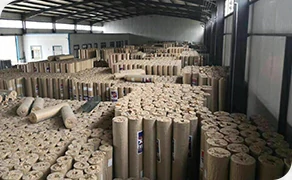 TEL:
+86-13102802206
TEL:
+86-13102802206
 Email:
fencenetting@china.com
Email:
fencenetting@china.com
 Language
Language
 TEL:
+86-13102802206
TEL:
+86-13102802206
 Email:
fencenetting@china.com
Email:
fencenetting@china.com
 Language
Language


Using Gabions as Retaining Walls
In the realm of civil engineering and landscaping, retaining walls play a crucial role in preventing soil erosion, managing water drainage, and providing structural stability. Among the various materials used to construct these walls, gabions—cages filled with rocks or other materials—have gained popularity due to their unique advantages and versatile applications.
Gabions, traditionally made of wire mesh and filled with stones, have been utilized since ancient times in military engineering and in the construction of riverbanks. Today, their use has expanded to include retaining walls, where they offer several benefits that enhance both functionality and aesthetics.
Using Gabions as Retaining Walls
Another significant benefit of gabions is their flexibility and adaptability. Gabion walls can be constructed in various shapes and sizes, making them suitable for a wide range of applications, from residential gardens to large-scale civil projects. Their modular design allows for easy expansion or modification as project needs change over time. Additionally, they can be filled with various materials, such as locally sourced stones, recycled concrete, or even natural materials like wood and soil, giving them an environmentally friendly edge.

Aesthetically, gabion walls offer a rustic charm that can enhance any landscape. The use of natural stones creates a pleasing visual effect, blending seamlessly with the surrounding environment. They can also be customized by using colored stones or incorporating plants into the design, such as cascading greenery that softens the hard edges of the wall. This integration of nature not only improves the visual appeal but also contributes to biodiversity, providing habitats for small organisms.
From a structural perspective, gabion walls utilize gravity for stability; their weight and the interlocking nature of the stones grant them significant load-bearing capacity. Upon installation, they settle into the underlying soil, further increasing their stability over time. This natural system makes them ideal for various terrains, including steep slopes and uneven ground.
Moreover, construction with gabions requires relatively low technical skill compared to traditional retaining wall methods, making it a more accessible option for DIY enthusiasts and smaller contractors. The installation process typically involves stacking the filled cages on a prepared foundation, which can significantly reduce labor costs. As a result, gabion walls have become an attractive choice for those looking to balance budget constraints with structural integrity.
However, there are some considerations to keep in mind when implementing gabion retaining walls. While they are durable, they are not immune to corrosion, particularly if not made from galvanized steel. Regular maintenance checks are recommended to ensure the structural integrity of the wire mesh and the stones within. Additionally, their effectiveness depends on the quality of the materials used; therefore, careful selection of stones and proper engineering practices are crucial.
In conclusion, gabions present a sustainable, flexible, and aesthetically pleasing solution for retaining walls. Their natural drainage capabilities, ease of installation, and minimal environmental impact make them a worthy consideration for any landscape project. Whether for residential purposes or large-scale construction, gabion walls remain a practical choice in modern engineering, successfully merging functionality with the beauty of nature.